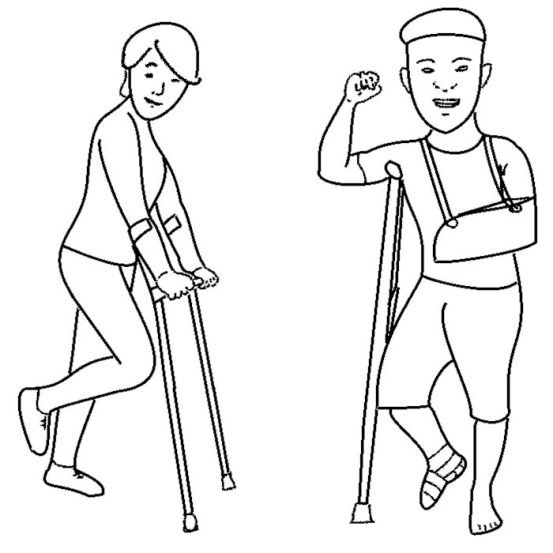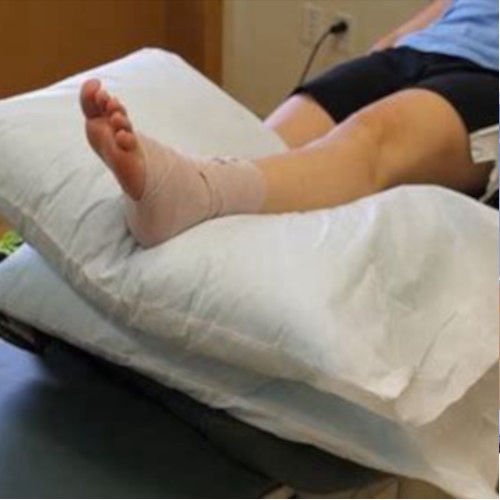
REST
Find the most comfortable position with full relaxing support. Use crutches or a sling if needed to move around.

ICE
Wrap ice in a layer of cloth and over the painful part. Tie it in place and rest with the part elevated for at least half an hour and as long as you can. Repeat at 1 or 2 hour intervals for 3 days.

COMPRESSION
Immediately following the injury, apply a firm (but not tight) compression bandage from below the injury or swelling, spiralling the bandage by overlapping about 1/3 until above the injury or swelling. Re-do the bandage whenever loose. Wear the bandage for 2 - 3 days or until the swelling is mostly eased and you can weightbear on the injured part or use it at least 50% of function.

ELEVATION
Elevate the injured part above heart level to reduce swelling until you can use the limb. Then elevate whenever you are not using the part e.g when sitting. Upper limbs - elevate on pillow in lying, elevate on pillows on table in sitting. Lower limb - elevate on pillows in lying, on another chair if sitting.